The Tagus (Spanish: Tajo [ˈtaxo]; Portuguese: Tejo [ˈtɛʒu] )is the longest river on the Iberian Peninsula. It is 1,038 km (645 mi) long, 716 km (445 mi) in Spain, 47 km (29 mi) along the border between Portugal and Spain, and 275 km (171 mi) in Portugal, where it empties into the Atlantic Ocean near Lisbon. It drains an area of 80,100 square kilometers (30,927 sq mi) (the second largest in the Iberian peninsula after the Douro). The Tagus is highly utilized for most of its course. Several dams and diversions supply drinking water to most of central Spain, including Madrid, and Portugal, while dozens of hydroelectric stations create power. Between dams, it follows a very constricted course, but after Almourol it enters a vast alluvial valley prone to flooding. At its mouth is a large estuary on which the port city of Lisbon is situated.
The main cities it passes through are Aranjuez, Toledo, Talavera de la Reina and Alcántara in Spain, and Abrantes, Santarém, Almada and Lisbon in Portugal.
After forming the border it enters Portugal, passing Vila Velha de Ródão, Abrantes, Constância, Entroncamento, Santarém and Vila Franca de Xira at the head of the long narrow estuary, which has Lisbon at its mouth. The estuary is protected by the Tagus Estuary Natural Reserve. There is the largest bridge across the river, the Vasco da Gama Bridge, which with a total length of 17.2 km (10.7 mi) is the longest bridge in Europe.
The Portuguese Alentejo region and former Ribatejo Province take their names from the river; Alentejo, from além Tejo "Beyond the Tagus" and Ribatejo from Arriba Tejo, an archaic way of saying "Upper Tagus".

Tagus River - Why important is it to Lisbon?
For the people of Lisbon, the Tagus is the most beautiful river in the world, and it's difficult to disagree. It’s a river that’s so wide many tourists think it’s the sea, and its waters actually do blend with those of the Atlantic, especially when it reaches the Belém district. It’s the Tagus that reflects the sunlight that gives Lisbon its singular luminosity, and that makes the Portuguese capital the only one in Europe with a rich natural protected area. The Tagus estuary is the habitat of over 100,000 birds, and you can see many of them by the Vasco da Gama Bridge. It was from these shores that many explorers departed to India, China, Brazil, and almost every corner of the globe, but today it’s the Tagus that’s the destination, for those who visit and live in Lisbon. It gives the city a sense of peace, with about 20 Km of promenades, landscaped areas, bike paths, and cafe terraces.

The 14th century heralded in the Age of Discover that was regarded as the golden age of Portugal. These expeditions originated from the docks that ran the length of western Lisbon and once the colonies were established the wealth of the new lands poured back into Lisbon to fund the extravagance of the era.

The Portuguese as a nation are emigrants with communities dotted throughout the world and this characteristic can be traced back to the close connection with the seas and the rivers of which the Tejo is the most important
💓💓💓💓💓
Cais das Colunas is right where Praca do Comercio meets the Tejo river and a perfect spot to enjoy the late afternoon sun.
2 - " PRAÇA DO COMÉRCIO "
- TERREIRO DO PAÇO
Lisbon's grandest square faces the river and was originally designed to welcome those arriving in the city by boat ( Cais das Colunas ).
What you see today is the 18th-century version, as the original square, named "Terreiro do Paço" and home to the royal palace, was destroyed in the 1755 earthquake. It was rebuilt with a triumphal arch facing the Tagus, and the surrounding arcaded buildings held government offices for many years.
At the center is a monument to King José I.

The square is also home to the city's oldest café, "Martinho da Arcada", and to the monumental Pousada hotel.
There is also atourist office, while across from it is the Lisboa Story Center, which presents the history of the city.
Under the arcades are cafés and restaurants with tables outside.
The earthquake of 1755, comparable with its effect with the destruction of Pompeii by the eruption of Vesuvius in A.D. 79, was considered one of the greatest non-military catastrophe in human history. The Enlightenment's dream of nature controlled by the human mind, then in the throes of formulation, was shaken to its very roots. While all the world was lamenting a judgment from God, the royal permanent secretary Sebastião José da Carvalho e Mello (1699-1782) settled down to rebuild the city. A man of the Enlightenment, his sole contribution to the debate over the judgment of God was to ask dryly why God only spared the red light district. he is recorded in history as the Marquês de Pombal, a title later awarded him by the king. In the new design for the lower town of Lisbon, he left the former royal square in its original position by the Tejo but changed its name from Terreiro do Paço to Praça do Comércio. The square is surrounded on three sides by arcaded buildings, leaving the fourth side open towards the Tejo
On 1 February 1908, the square was the scene of the assassination of Carlos I, the penultimate King of Portugal. On their way back from the palace of Vila Viçosa to the royal palace in Lisbon, the carriage containing Carlos I and his family passed through the Terreiro do Paço.
3 - EQUESTRIAN STATUE OF KING JOSÉ I
( " ESTÁTUA DE D. JOSÉ I " )

Inther centerpiece of the " Praça do Comércio " there is the equestrian statue of King José I, inaugurated in 1775 in the center of the square. This bronze statue, the first monumental statue dedicated to a King in Lisbon, was designed by Joaquim Machado de Castro, Portugal's foremost sculptor of the time.
Machado de Castro's statue was the first equestrian statue produced in Portugal to be cast in bronze. The casting was carried out successfully in a single operation on October 15 1774 in the Arsenal do Exército. And on May 22 the following year, it began its journey to the Praça do Comércio in solemn procession. On June 6 1775 the monument was finally ready for unveiling, the ceremony forming part of splendid celebrations.
The 14 m high equestrian statue shows the king dressed in a cape and plumed helmet. His majestically grave gaze is directed downriver over the Tejo to where the city - and the land itself - opens out to the sea. Two allegorical groups flank the oval plinth, while under the royal emblem on the end face is a medallion bearing a portrait of Pombal.

The Rua Augusta Arch is a stone, triumphal arch-like, historical building, and visitor attraction in Lisbon, Portugal, on the Praça do Comércio. It was built to commemorate the city's reconstruction after the 1755 earthquake. It has six columns (some 11 m high) and is adorned with statues of various historical figures. Significant height from the arch crown to the cornice imparts an appearance of heaviness to the structure. The associated space is filled with the coat of arms of Portugal. The allegorical group at the top, made by French sculptor Célestin Anatole Calmels, represents Glory rewarding Valor and Genius.

Originally designed as a bell tower, the building was ultimately transformed into an elaborate arch after more than a century.


Because of the top cornice's great height (over 100 feet/30 m), the figures above it had to be made colossal. The female allegory of Glory, which is dressed in peplos and measures 23 feet (7.0 m), stands on a three-step throne and holds two crowns. Valor is personified by an amazon, partially covered with chlamys and wearing a high-crested helmet with dragon patterns, which were the symbols of the House of Braganza. her left-hand holds the parazonium, with a trophy of flags behind. The Genius encompasses a statue of Jupiter behind his left arm. On his left side are the attributes of writing and arts.
The four statues over the columns, made by Victor Bastos, represent Nuno Alvares Pereira and Sebastião José de Carvalho e Melo, Marquis of Pombal on the right, and Vasco da Gama and Viriatus on the left. The two recumbent figures represent the rivers Tagus and Douro.

The monument has an elevator placed inside to allow tourist visits to the terrace which is a beautiful viewpoint over Praça do Comércio and all of downtown.
Opening in 1782, Restaurant Café Martinho da Arcada, located in the corner of the raça do Comércio, near the Tagus river, is one of the oldest restaurants cafés in Lisbon. Well-known names from Portuguese life, such as Bocage, Amalia Rodrigues, and Portugal’s most famous 20th C. poet Fernando Pessoa, were some of its usual customers.
the simple and authentic cuisine but also to see where the great Portuguese poet used to sit and order his afternoon coffee and aguardente. Martinho da Arcada was founded in 1782, making it one of Lisbon's oldest cafes. Pessoa (1888--1935) had a favorite table inside the main salon and this has been lovingly preserved for posterity. Photographs of the man also adorn the walls. Customers can order a drink or something more substantial and very often choose to sit at one of the tables on the terrace that overlooks Praça do Comércio.
FERNANDO PESSOA
- Once again I see you – Lisbon, the Tagus, and all –
- Useless passerby of you and of me,
- Stranger in this place as in every other,
- Accidental in life as in the soul,
- Phantom wandering the halls of memory,
- To the squealing of rats and the squeaking of boards,
- In the doomed castle where life must be lived...
-
-
-
-
- Fernando Pessoa, from "Lisbon Revisited" (1926)
- ed. and tr. by Edwin Honig and Susan M. Brown.
-
-
-
Pessoa was a prolific writer, and not only under his own name, for he dreamed up approximately seventy-five others. He did not call them pseudonyms because he felt that did not capture their true independent intellectual life and instead called them heteronyms. These imaginary figures sometimes held unpopular or extreme views.
Walking on these streets, until the night falls, my life feels to me like the life they have. By day they’re full of meaningless activity; by night, they’re full of meaningless lack of it. By day I am nothing, and by night I am I. There is no difference between me and these streets, save them being streets and I a soul, which perhaps is irrelevant when we consider the essence of things.
Fernando Pessoa
HETERONYMS
Fernando Pessoa on the heteronyms
Fernando Pessoa
If, by any chance, you want to take a picture and you hear a man, with a mentally retarded face, saying that you can not take the picture, ignore him. This bizarre situation sometimes happens in some churches. Things are already changing. In some historical places of Portugal, in some places built centuries ago, you can still find some imbecile who considers himself the owner of the place. It turned out that a known priest was a thief of sacred art.
💓💓💓💓💓
7 - CASA DOS BICOS
( JOSÉ SARAMAGO FOUNDATION )
The Casa dos Bicos (Portuguese for House of the Beaks/Spikes) is a historical house in the civil parish of Santa Maria Maior, in the Portuguese municipality of Lisbon. The house, built in the early 16th century in the Alfama neighborhood, has a curious façade of spikes, influenced by Italian Renaissance palaces and Portuguese Manueline styles. It survived the disastrous 1755 Lisbon earthquake that destroyed much of the city, but over time was abandoned as a residence and used as a warehouse. After a 20th-century renovation, it became the headquarters of the José Saramago Foundation.
The Casa dos Bicos, being the head office of this institution since June 2012, also offers, along with the permanent exhibition The seed and the fruits, about the life and work of José Saramago, cultural events such as books launching, theater plays, conferences, debates, poetry sessions, music concerts, among others.
The house where the writer and his wife Pilar del Río lived until his death in 2010, called just A Casa (The House), is also open to visitors in Tías, Lanzarote (Spain).
CASA DOS BICOS ( JOSÉ SARAMAGO FOUNDATION ) »»»»»» SÉ ( CATHEDRAL ).
8 - " SANTO ANTÓNIO " CHURCH
Fernando de Bulhões - Saint Anthony - was born in Lisbon in 1195, the son of a wealthy family. In 1220, while studying in Coimbra, he entered the Franciscan Order, adopting the name António. His missionary travels would lead him to Italy, where he settled in Padua. Due to his immense popularity, he was canonized less than a year after his death, in 1232.



9 - " SÉ " ( CATHEDRAL )
The solid and imposing Sé Cathedral is Lisbon’s most important and iconic religious building. Since the 12th century, the Sé Cathedral has been entwined in Portugal’s early history, which bore witness to the baptism, marriage, and passing of Portugal’s nobility and elite. The exterior of the grand old church resembles more that of a fortification than a religious center, with massive solid walls and two imposing clock towers.

Inside gothic arches extend to the faulted ceilings and medieval statues and decorative altars fill the alcoves. To the rear of the Sé are the ancient cloisters, which were constructed directly on top of a ruined mosque and symbolically confirmed the 13th-century Catholic conquest of Portugal from the North African Moors.

There are two main tourist sections to the cathedral; the religious nave, transept, and sanctuary and the disused cloisters to the rear. The cloisters have been partially excavated to reveal the underlying foundations of the mosque that the Se Cathedral was constructed upon.
The religious sections of the cathedral are open to the public every day from 7:00 until the evening mass, held in Portuguese, at 19:00. There is no admission fee to the main cathedral but all visitors must be suitable and respectively dressed.
.

"SÃO TIAGO" CHURCH
10 - " SANTA LUZIA " VIEWPOINT
11 - LARGO DAS PORTAS DO SOL
( BELVEDERE )
PICKPOCKETS
Whether you’re heading uphill to the São Jorge Castle from the Cathedral or the other way around, the Portas do Sol viewpoint is perfectly located in the middle of this route which is ideal for an impromptu break.
Visiting this lookout is also an excuse to enjoy Lisbon’s most genuine traits with a fantastic view of the Alfama district’s eastern front and the Tejo River, which extends to the edge of the river in a unique maze of streets, stairways, and alleys. From the top of the viewpoint, it is also possible to admire the various domes and different types of architecture that make up the Santo Estêvão, São Miguel, and São Vicente de Fora churches.


12 - " SÃO JORGE " CASTLE


https://castelodesaojorge.pt/en/

Built by the Visigoths in the 5th Century, the São Jorge Castle was enlarged by the Arabs in the 9th Century and modified during the reign of Afonso Henriques. Its greatest period started in the middle of the 13th Century and went up to the 16th Century¸ the era in which the castle was occupied by the kings of Portugal. The visit will take you more than half the morning as the area is quite expensive. On top of the castle, with its eleven towers, on the same grounds, there is a small museum, a café, and a restaurant.
About 20 years ago, in the back gardens of the castle, there were animals and a space for children. Today this space is reserved for the staff of the castle to park their cars. The castle's own rear entrance is reserved for the entrance of these people who were placed in the castle because they are familiar with politicians and other opportunists. Normally their qualifications were obtained in an unclear way. But it is usual. The best people and the best students are always overtaken by imbeciles who are protected by the ruling class. Those who are better prepared and who have expended more effort are allowed to emigrate, and imbeciles, normally addicted, seize the best places.
The best photos that can be taken from the castle: before noon and at night, in the low season, when the days are short.




 |
| The boat to BARREIRO ( TRAIN TO FARO, ALGARVE ) seen from the castle of São Jorge |
 |
| The bridge VASCO DA GAMA seem from the castle of São Jorge |
 |
| Praça da Figueira ( left ) - tram 15 to Belém, and Largo Martim Moniz ( right ) - tram 28, seen from São Jorge castle |
 |
| SÃO VICENTE DE FORA MONASTERY seen from the castle of São Jorge. |
FROM THE TAGUS RIVER ("CAIS DAS COLUNAS") TO THE "SÃO JORGE" CASTLE, THROUGH THE OLD ENTRANCE OF THE CITY. THESE ANCIENT DOORS OF ENTRANCE IN THE CITY, SOME CENTURIES AGO, WERE LOCATED ALONG THE MARGINS OF THE RIVER.
A - ARCO ESCURO
B - ARCO DAS PORTAS DO MAR
C - ARCO DA CONCEIÇÃO
D - ESCADINHAS DO CAMPO DAS CEBOLAS
E - ARCO DE JESUS
F - TRAVESSA DE SÃO JOÃO DA PRAÇA
G - ARCO DO ROSÁRIO
























































































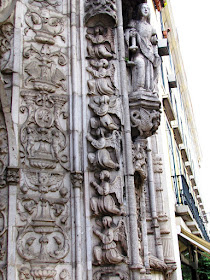


















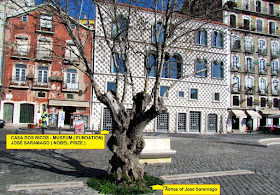

















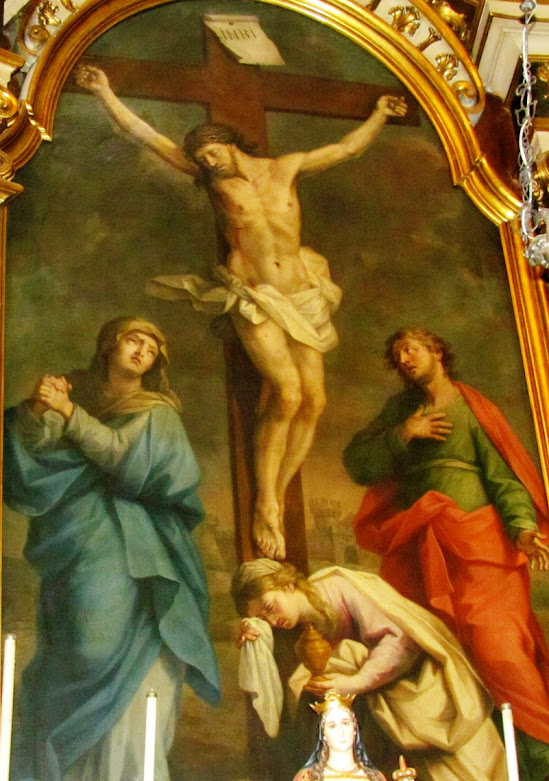











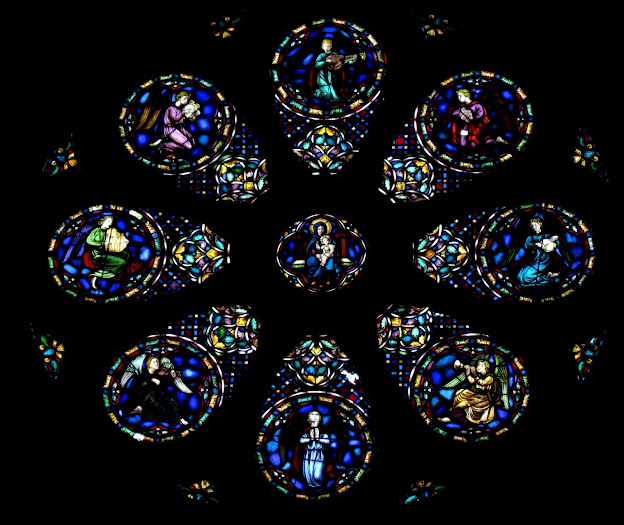




























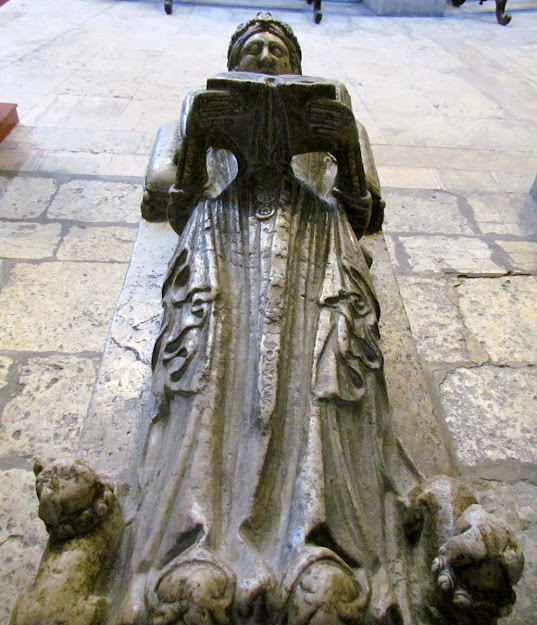















































































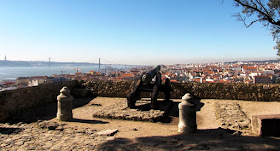





















































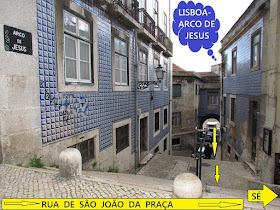




































































































No comments:
Post a Comment